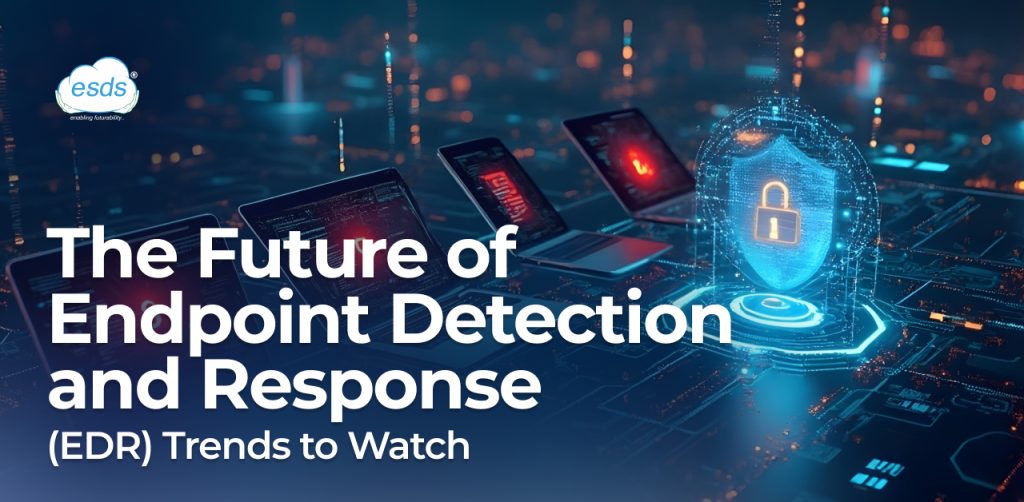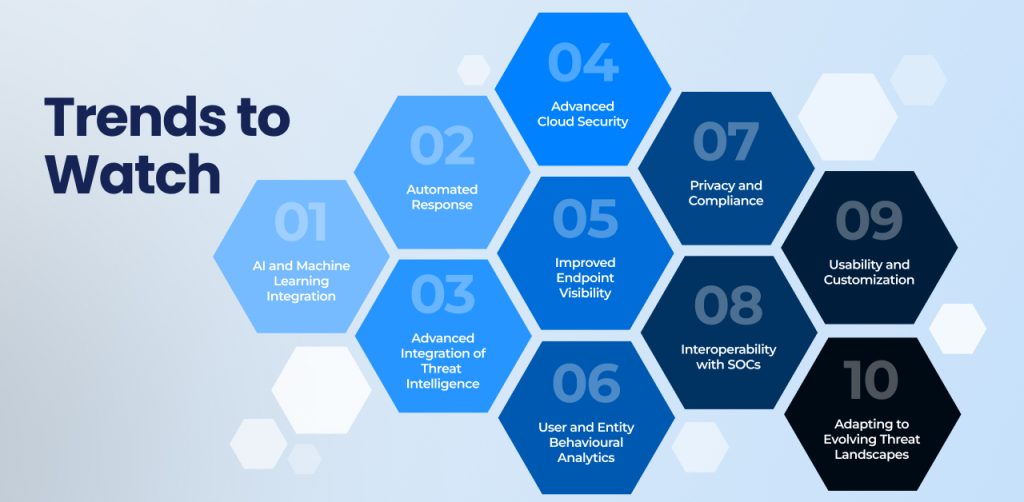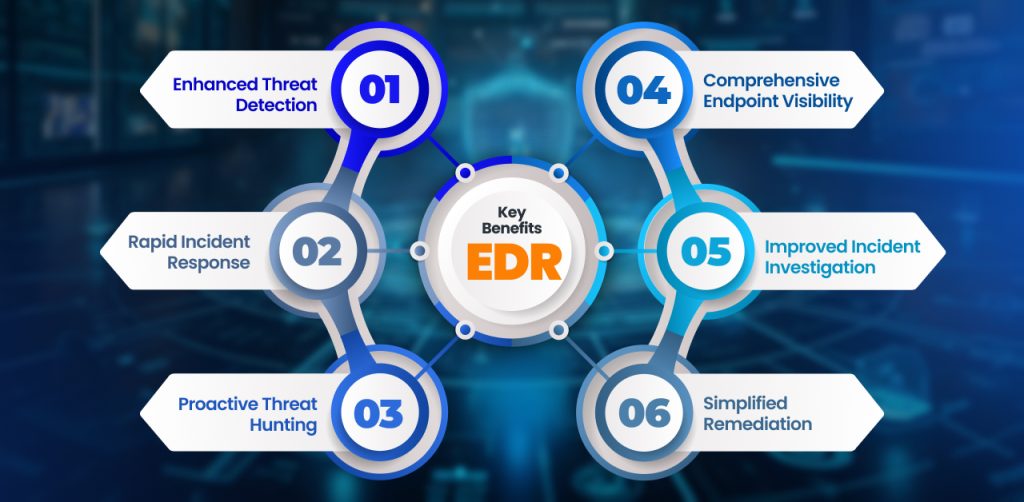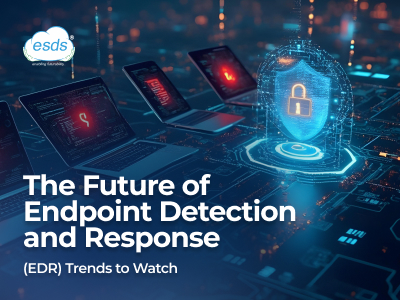The Future of Endpoint Detection and Response (EDR) Trends to Watch

Amidst the rise of more advanced cyber threats, endpoint detection and response are more and more crucial for protecting organizational assets. As evolving services and threats keep pace with the shifting threat landscape and available technologies, the future of EDR services is changing at breakneck speed. Here are some key trends worth watching over the next five years:
1. AI and Machine Learning Integration
- Predictive Analytics: AI and machine learning will deepen predictive analytics in EDR services. It will be possible to track the anticipation and detection of threats before they fully materialize into organization-level incidents. Based on these advancements, organizations will gain the ability to address vulnerabilities proactively.
- Behavioural Analysis: AI will enhance behavioural analysis capabilities within EDR systems. The technology will increase the accuracy of detecting anomalies and suspicious activities. This will further increase the possibility of detecting threats while reducing the likelihood of false positives.
2. Automated Response
- Automated Remediation: Future EDR services shall be accompanied by automatic Remediation to enable the EDR solution to rethink and respond more promptly and with less effort, thereby minimizing the response time.
- Automated Self-Recovery: EDRs shall be accompanied by auto-self-recovery features that ensure the independent recovery and rectification of vulnerabilities. These will ensure system integrity while minimizing eventual damage from breaches.
3. Advanced Integration of Threat Intelligence
- Real-Time Feeds of Threat Intelligence: Advanced EDR solutions will have firmly integrated real-time feeds for threat intelligence. In this regard, for example, there will be real-time awareness of new threats and vulnerabilities emerging, thus enhancing services generally associated with EDR in general.
- Better Collaboration through Threat Sharing: Better capabilities to share threats will encourage better collaboration among various organizations and industries. Collective defence will help strengthen security postures and defences against complex threats.

4. Advanced Cloud Security
Cloud-Native EDR: Advanced EDR solutions will safeguard cloud-native workloads and overcome the security challenges of hybrid and multi-cloud environments.
- Container and Kubernetes Security: EDR tools will focus on protecting containerized environments and orchestration platforms like Kubernetes for the operational security of these widely adopted technologies.
5. Improved Endpoint Visibility
EDR service will be extended to cover more endpoints, such as IoT and mobile devices, thus increasing visibility and protection coverage.
- Unified Endpoint Security: This converged approach of endpoint security aggregates the monitoring and response cross-cutting of all the endpoints, thus improving the overall management of endpoint security.
6. User and Entity Behavioural Analytics (UEBA)
- Contextual Insights: EDR systems will use the power of UEBA to identify subtle threats hidden in user behaviour that traditional methods may not pick up.
- Insider Threat Detection: Another new advanced capability for insider threats would find its way through behaviour analysis, which is capable of detecting deviations from normal patterns to respond to some possible internal security threats.
7. Privacy and Compliance
It will continue to evolve as policies on privacy regulations and compliance requirements are updated and modernized. This ensures that organizations remain updated based on their legal and regulatory requirements.
- Data Privacy: Advanced features would be rolled out to protect sensitive data, maintaining robust security measures while balancing security and data privacy.
8. Interoperability with SOCs (Security Operations Centers)
- Unified Platforms: EDR solutions will integrate seamlessly into a more comprehensive security operations platform, which provides a unified view of threats and incidents to help with better coordination and incident management.
- Tools: Improving collaboration tools at SOCs streamlines their processes for effective incident management in response to threats, thus improving overall organizational security.

9. Usability and Customization
- User-Friendly Interfaces: Future EDR solutions would be very user-friendly, easy to work with, and possess intuitive interfaces and dashboards. This would further enhance the usability of such solutions for security teams and their threat management.
- Customizable Solutions: Customization will be considered essential in EDR services, as various organizations and industries have different requirements, and the solutions have to be specifically customized according to each entity’s security requirements.
10. Adapting to Evolving Threat Landscapes
- Adaptive Security Posture: EDR systems will adapt to changing threat landscapes with advanced analytics and threat intelligence, continuously refining and improving security measures.
Conclusion
The future of EDR is promising, with advancements in AI, automation, cloud security, and user behavioural analytics enhancing protection against emerging threats and improving overall security posture. At ESDS, we lead this innovation frontier with cutting-edge EDR services designed for comprehensive protection. ESDS EDR solutions are tailored to your organization’s needs, integrating advanced threat detection, automated response capabilities, and seamless integration with your existing security infrastructure.
Discover how our Endpoint Detection and Response Service can enhance your organization’s security. https://www.esds.co.in/contact-us
- 7 Steps to Build a Strong Data Sovereignty Framework - November 3, 2025
- 7 Proven GPUaaS Steps for PSU Success and Secure Resilience - September 26, 2025
- How Tier III DCs Deliver Sovereign Data Security You Can Trust - September 5, 2025
